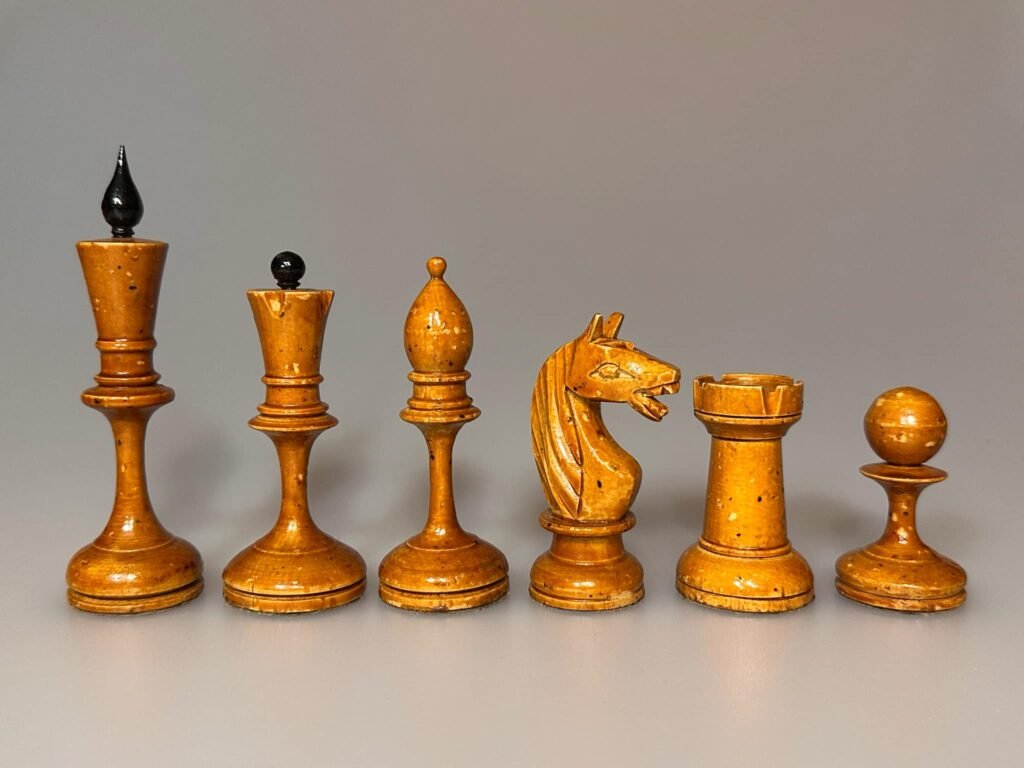The 1930’s Soviet “Artel Vsekokhudozhnik” Chess Set by “Artel Vsekokhudozhnik”?.
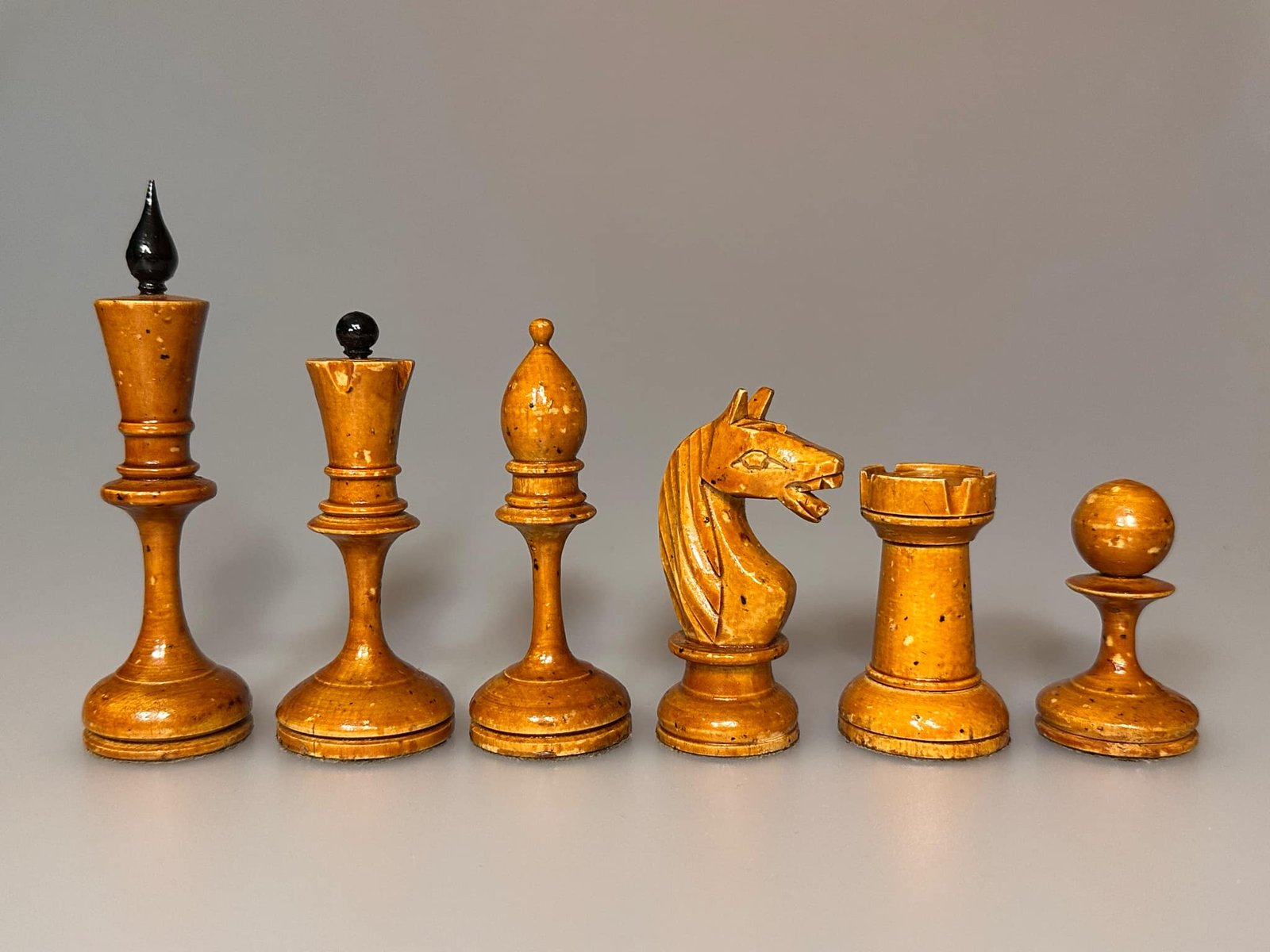
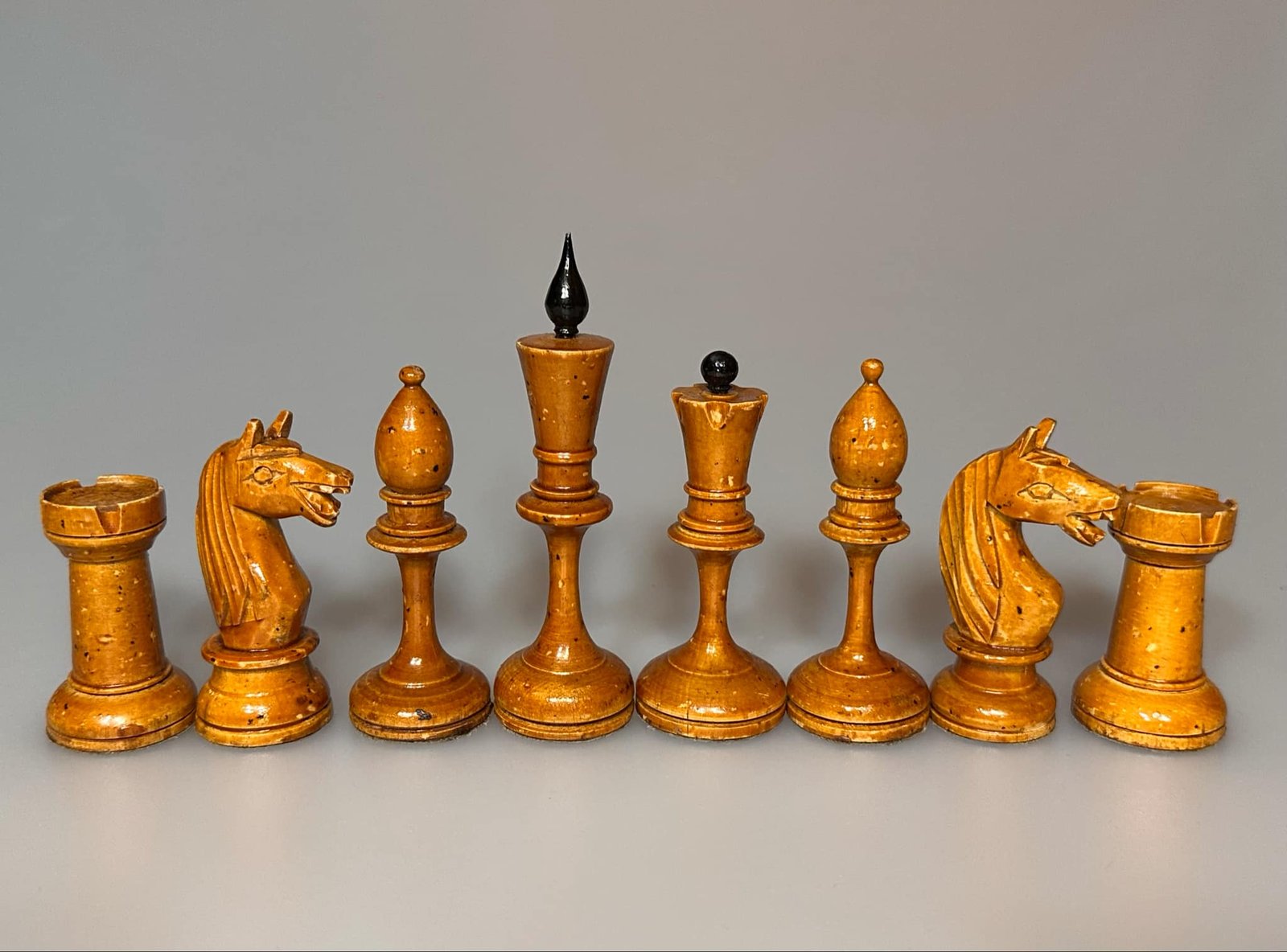
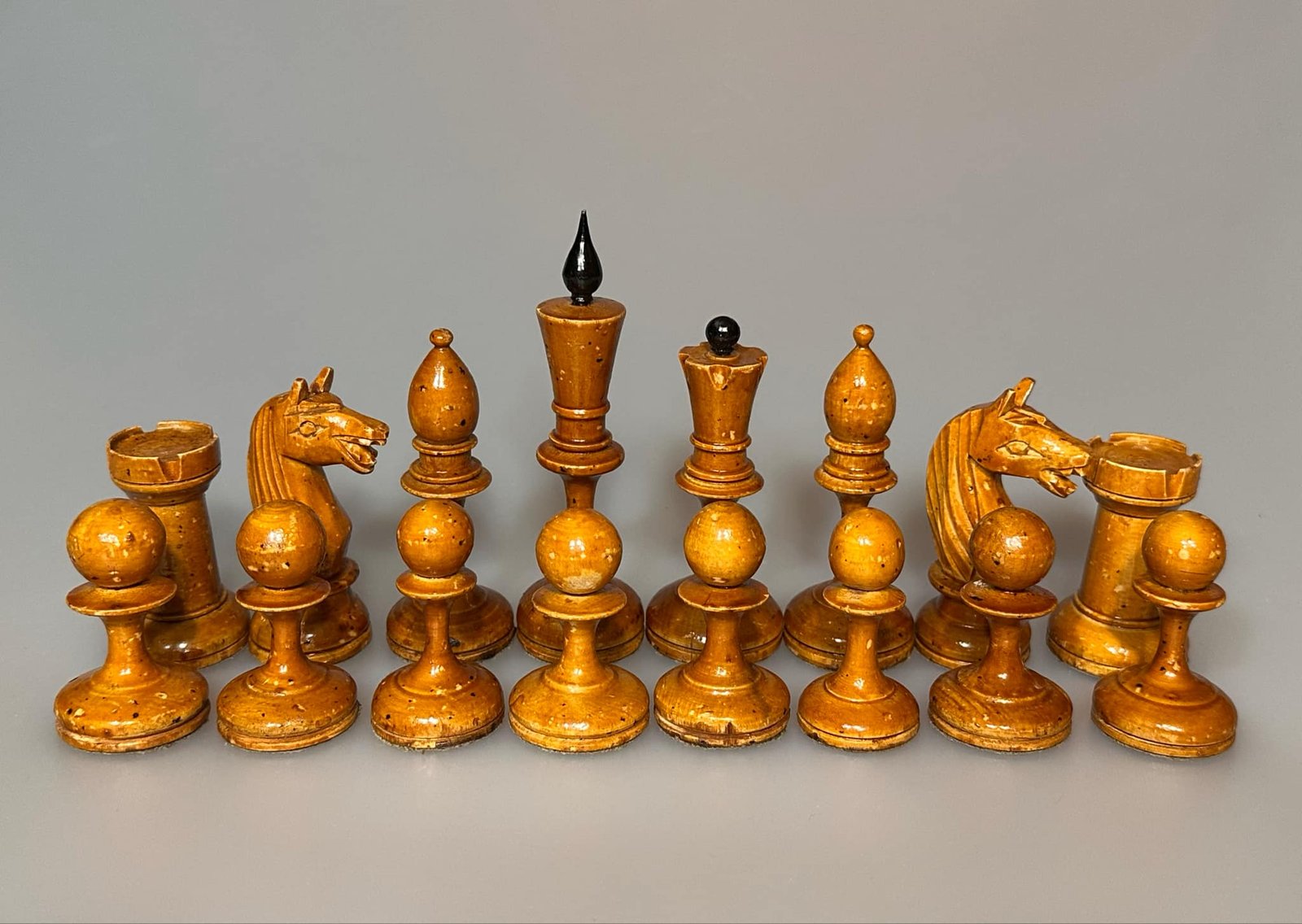
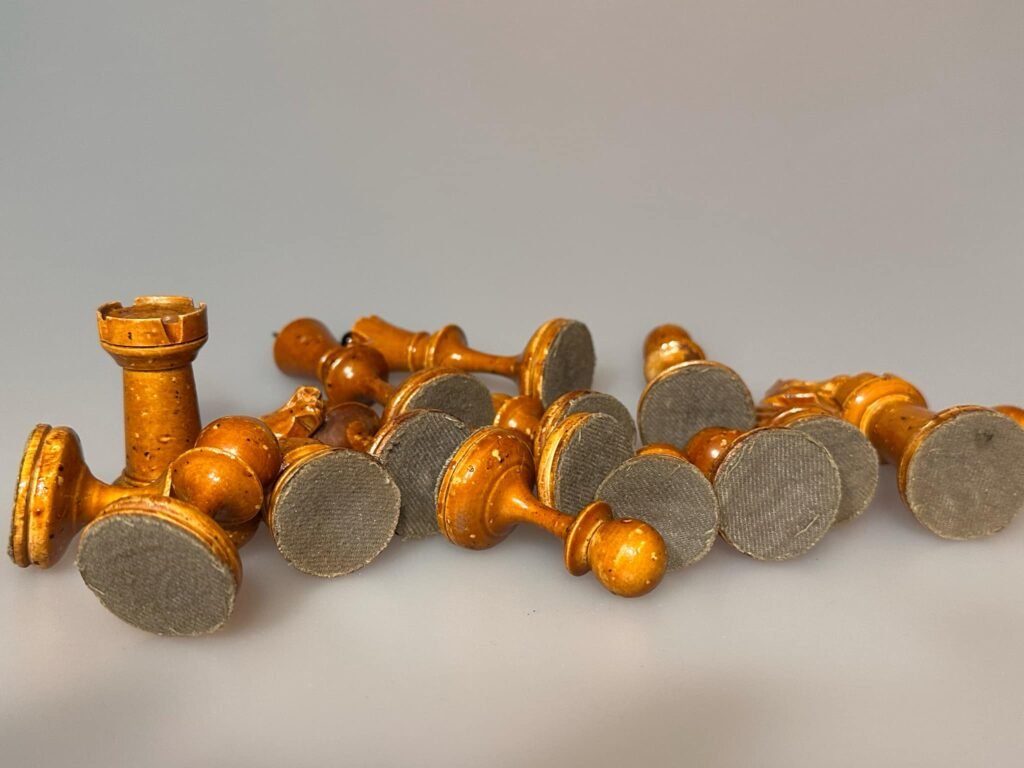
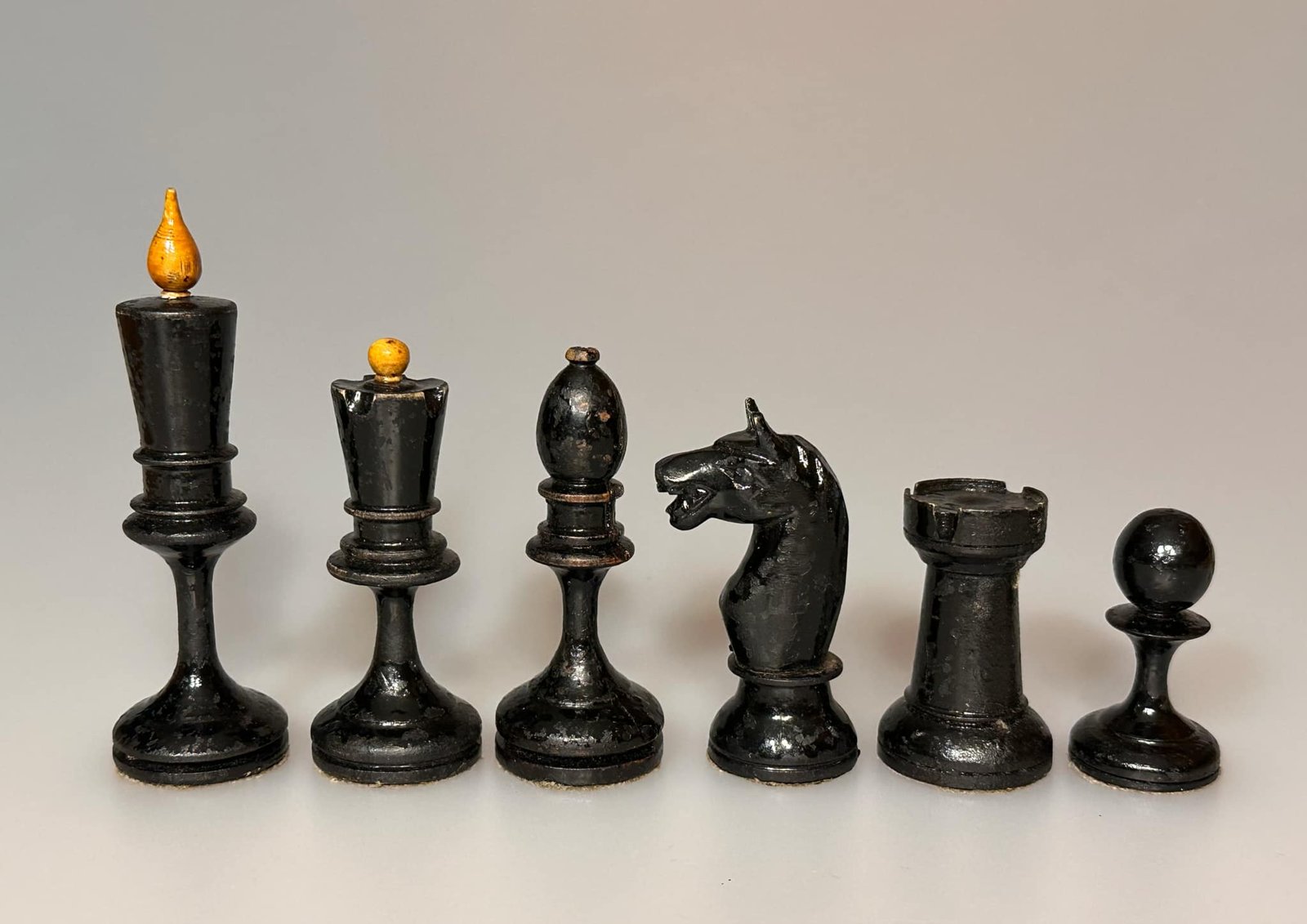
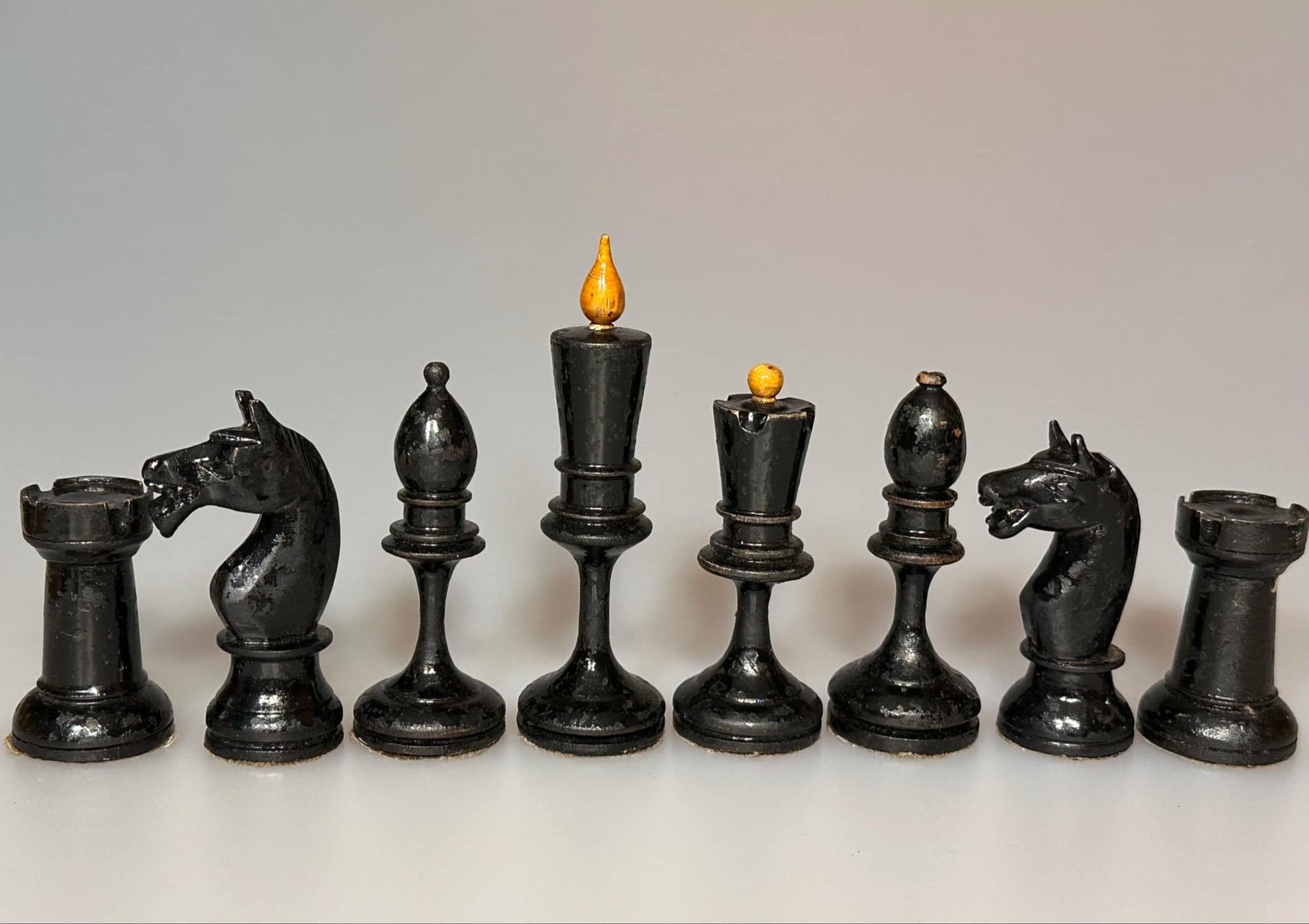
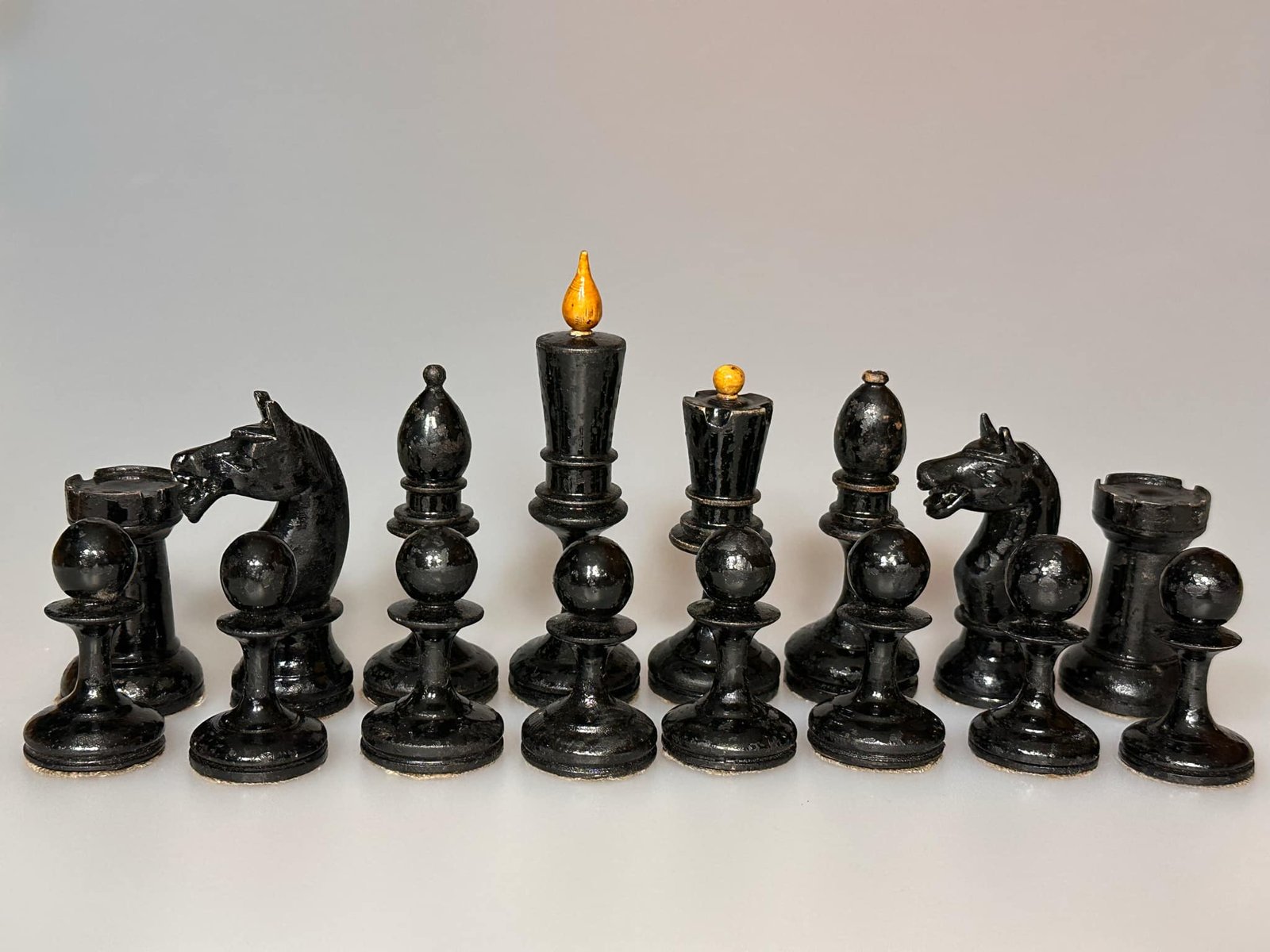

What they did…
Here we have a particularly intriguing Soviet set—rare, and seemingly unknown in most collector circles. It’s widely believed to belong to the Artel Vsekokhudozhnik family, though there’s still uncertainty about its precise origins or the specific design it evolved from.
Visually, it feels like a cross between a Soviet Upright and a 1925 Moscow International “Raven Knights” set—almost as if those two styles merged, and this set is their distinctive offspring. The overall form leans heavily toward an elongated Soviet Upright, but there are definite nods to the 1925 Moscow International “Raven Knights” lineage as well. Most of the key traits align with the Upright—especially in the silhouette and general piece structure—yet the stems show a more pronounced concave curve, the bishop tops are more compact, and the bases echo the design of the 1925 Moscow International “Raven Knights” sets.
Whether this set is a deliberate variation or a transitional hybrid remains to be seen, but it stands as yet another testament to the skill and subtle evolution of Soviet craftsmanship during the early 20th century. I’m hopeful that further research will shed more light on this design’s lineage. For now, it’s fair to place it within the Artel Vsekokhudozhnik family, while keeping the door open for deeper exploration.
Any insights, theories, or comparable finds related to this set’s origin would be highly welcomed—and will be carefully reviewed by myself and some of the most respected minds in Soviet set study, including Alexander Chelnokov, Chuck Grau, Sergey Kovalenko, one of our newest upcoming starts Eva Silvertant, and others.
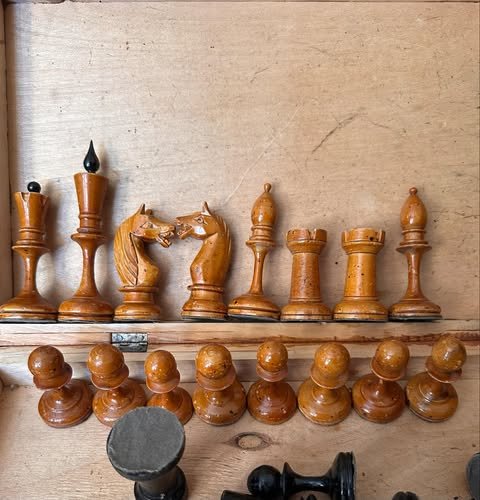
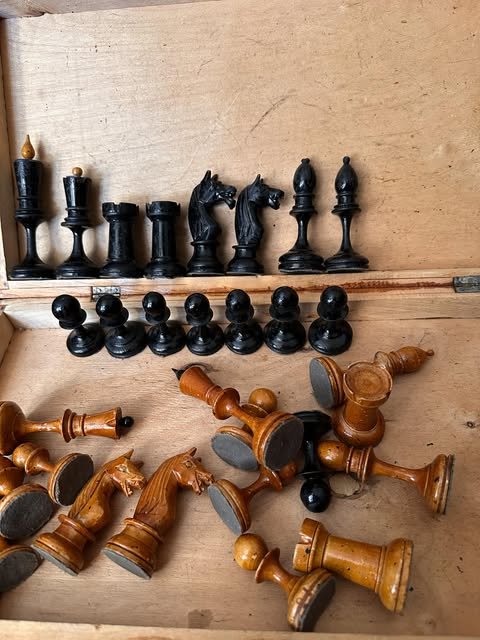
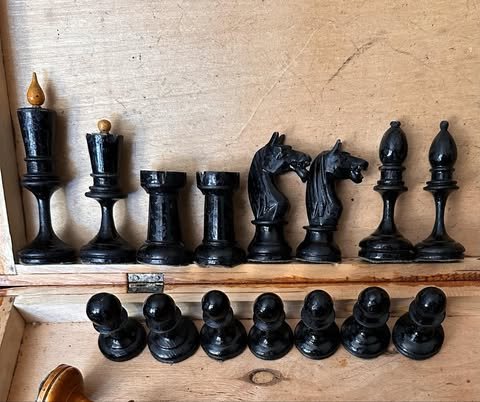
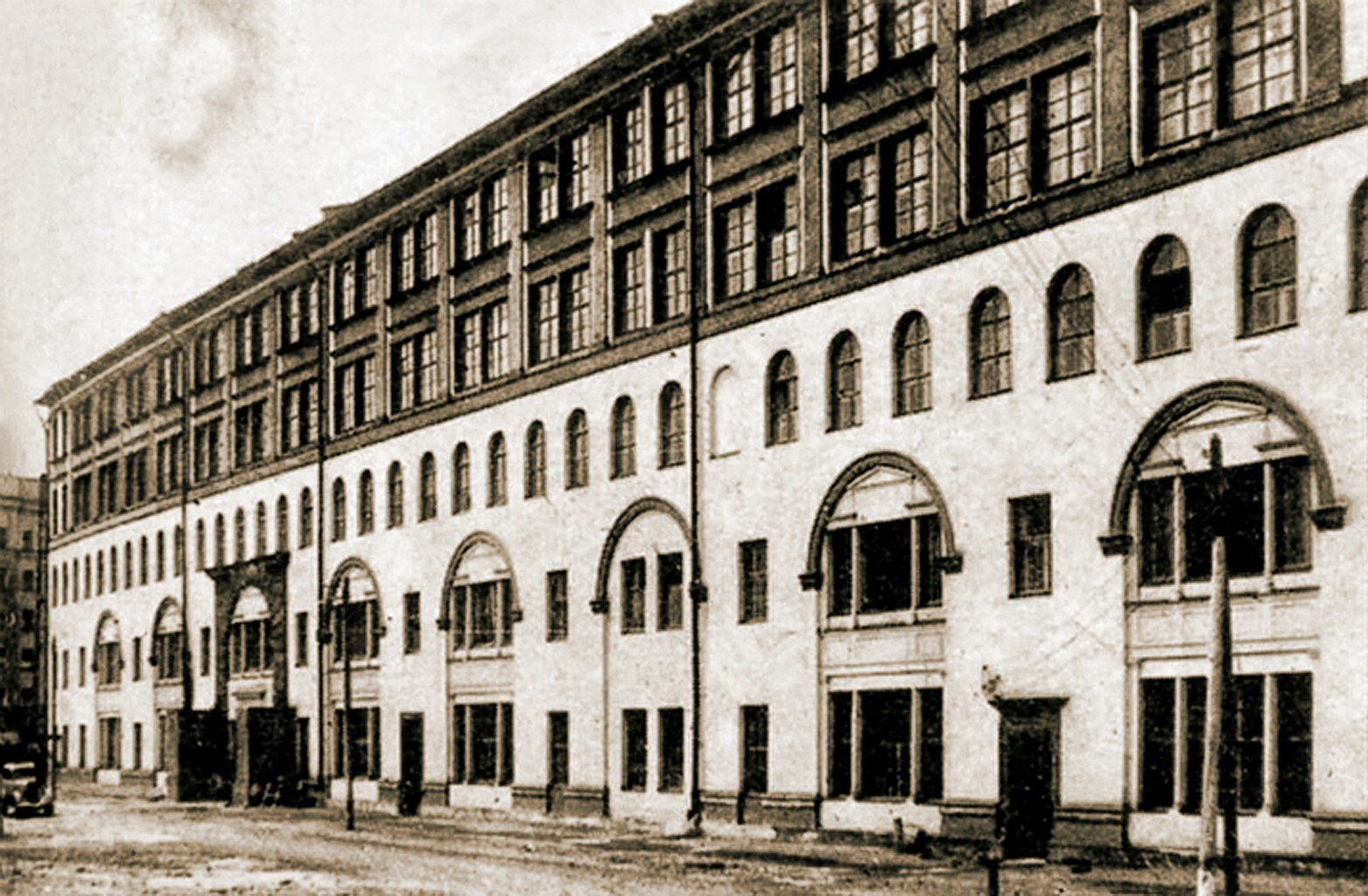
My opinion of this design…
What makes this set especially fascinating is that it doesn’t feel like an experiment. It feels like a decision. There’s purpose in the design, as though it was meant to stand apart—perhaps crafted for a regional club, a limited series, or simply the product of a specific artisan’s evolving vision during the early 20th century Soviet renaissance in chess culture.
The Soviet Union was never short of brilliant craftsmen, many of whom worked in anonymity, shaping the physical culture of chess just as much as its competitive legacy. This set stands as a relic of that silent tradition—beautifully carved, quietly expressive, and shrouded in a little mystery.


